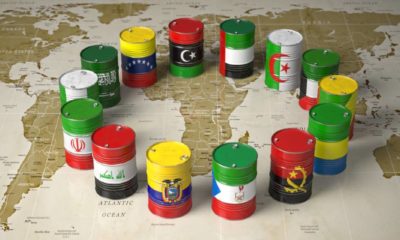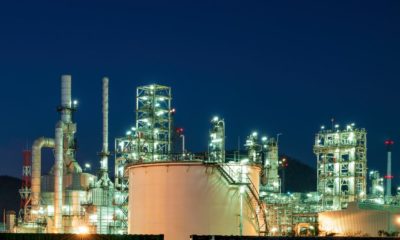Commodities
Oil For The Second Time Around

It seems like the doomsayers who predicted a fall in oil prices to $30 a barrel in 2016 may have been pessimistic in their predictions.
The price of Brent crude oil, the global benchmark for oil prices, fell to a low of $35.10 in January, but closed on Friday at 48.10, just below its 2016 peak of $48.50. Experts are predicting that this trend will hold during 2016. While this is considerably below the price per barrel from two years ago, this price may well be far more sustainable and reasonable in the longer term.
What do recent trends tell us about oil prices?
Barely two years ago, the price of oil was at a high of $116 per barrel. Any price over $100 per barrel was the expected break-even point to guarantee the oil company’s survival. However since June of 2014, the price dropped rapidly by over 70%. Beginning 2015, Brent prices had slumped to $47.86. However, forecasters and investors alike watched with more confidence as the price steadily increased for the first half of the year reaching a high of $65.15 in May. The price rise was short-lived, however, as once again prices fell, getting to a low of $36.85 in December. So far this year, the price has steadily increased, from a January low of $27.36 and is closing on $50 as April ends.
It’s All About the SPD: Supply, Production Cost and Demand
Any economist will tell you that there are three major factors which determine price: supply, the cost of production, and demand.
Supply loosening
Supply has traditionally been the tool used by oil producing nations to keep the price at preferred levels. However while OrgPEC countries Saudi Arabia, Venezuela, and Qatar, along with Russia, agreed to a production freeze at current levels, Iran, which recently had trade embargoes lifted, indicated that it wished to increase production. Also, the United States agreed in October last year to export crude oil, thus ending a 40-year ban. In December 2015, the first such shipment of crude oil on board the Theo T tanker left Texas, bound for France. Further consignments of liquefied natural gas are being shipped to various countries in Europe, with 9 million metric tons expected to be developed by Texas company Cheniere Energy Inc. per year.
[seabridge]
Production Cost Dropping
Increased investment in shale oil production means a greater investment in technology, which leads to better extraction practices and eventually lower costs. While these costs were initially high, the improved efficiency in production due to more effective drilling techniques has reduced these costs to a stage where shale oil production is more profitable than it ever has been in the past.
Demand still demands
As of yet, no profitable, sustainable, fuel alternative is available. And in the summertime, when commuter travel increases, there’s no reason to expect a serious downturn in demand over the next few months. Even with more energy-efficient vehicles and push for more environmentally sustainable methods of travel, there is no indication that demand for oil is falling in the US. As always, an essential product will command prices which the consumer is prepared to pay.
The points are:
- Boom, bust, boom. Swings and roundabouts. However it’s termed, the oil market has always been erratic. When oil was in short supply, prices rose. This led to more competitors entering the market, thereby increasing supply. Once supply grew again, prices fell. However as noted, the supply freeze by Russia and some Opec countries is being balanced to some degree by Iran once again being free to sell its products and the US lift on its export ban of crude.
- Increased customer choice. With only a few major oil producing countries in the world, there has been a tendency to use oil as a political or strategic weapon. Accept the price on offer, or no sale. With this threat mitigated by a more diverse choice as to where to buy from, sellers will be aware that consumers no longer have to accept excessive prices for oil.
- The value of the dollar. As long as the US dollar, the currency used to trade oil in, remains weak, the price of oil increases. However with the dollar steadying against other currencies, this should lead to a more sustainable price of oil.
So, what will the rest of 2016 bring?
Oil remains as one of the most heavily traded and volatile commodities on the planet. However with a greater than expected stability in supply, coupled with a slowly strengthening dollar, and a minimal shift in demand, it can be hoped that the extreme price variances of the past few years are tempered so that oil remains profitable, but not always to an excessive extent.















